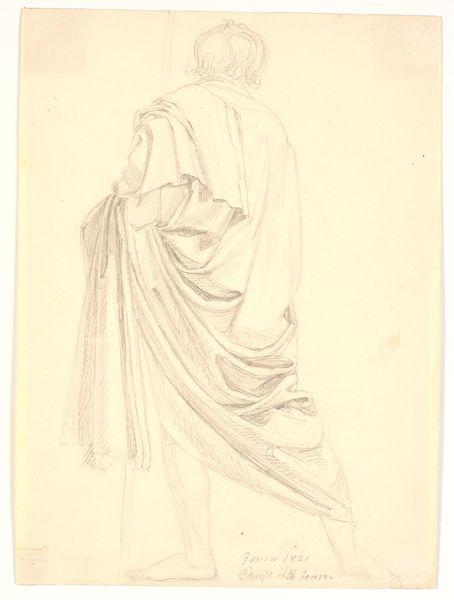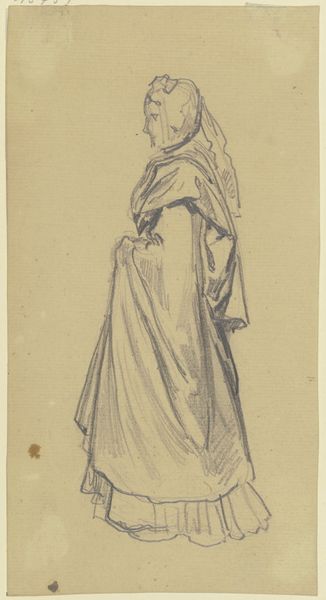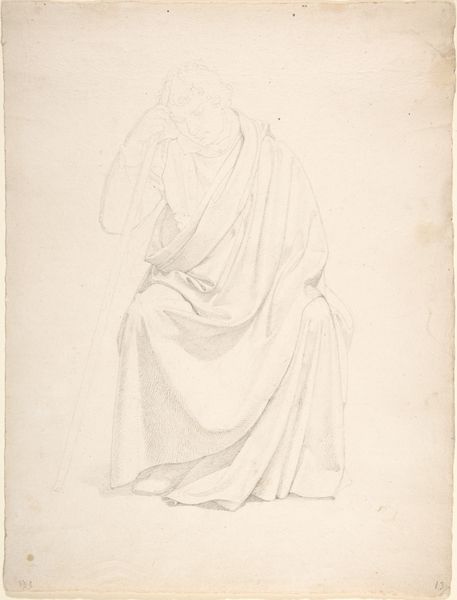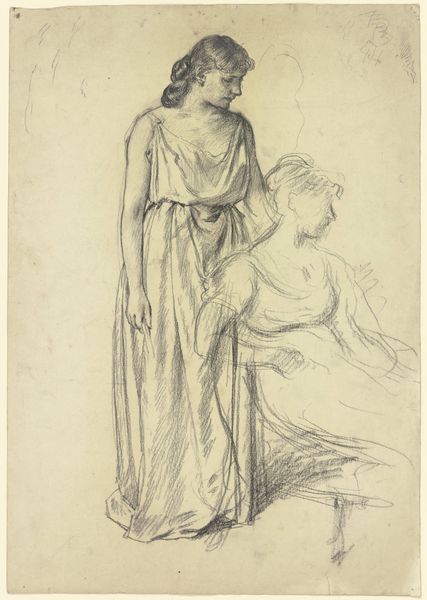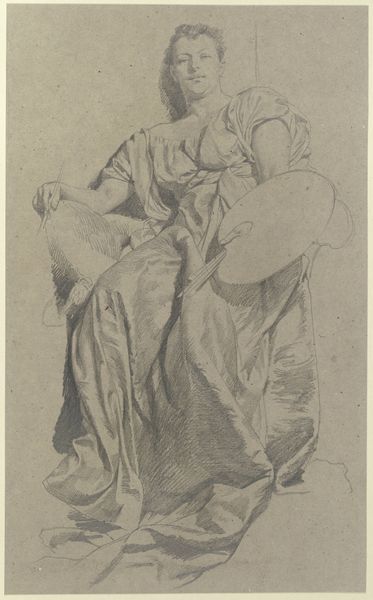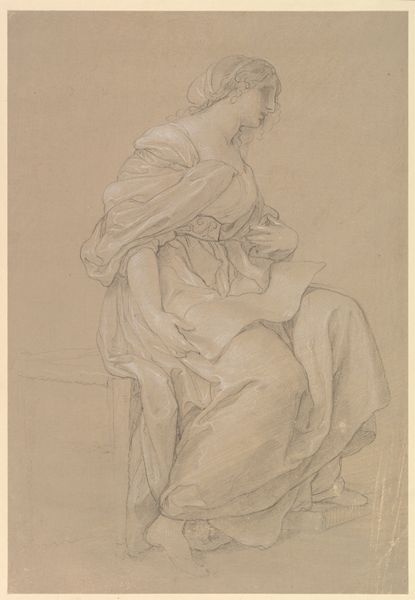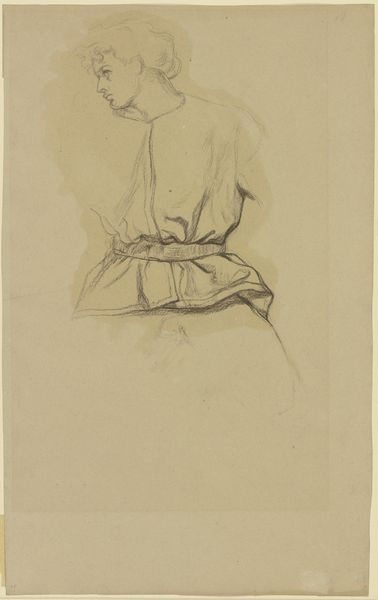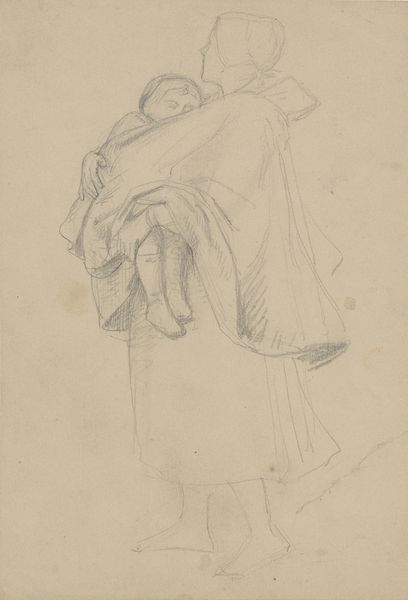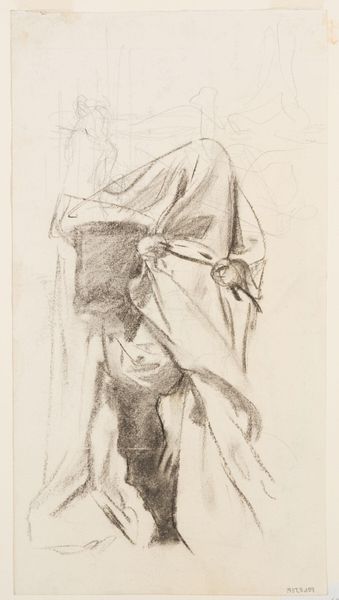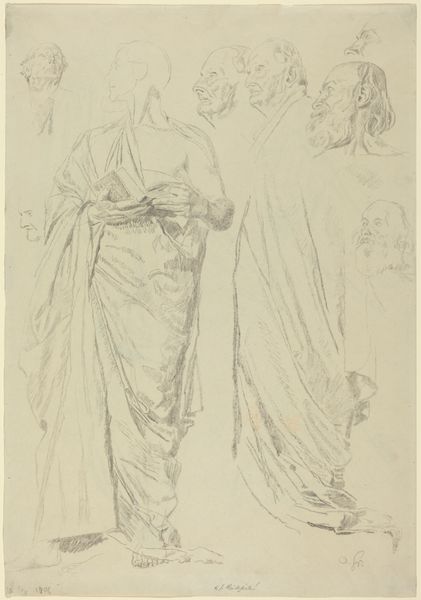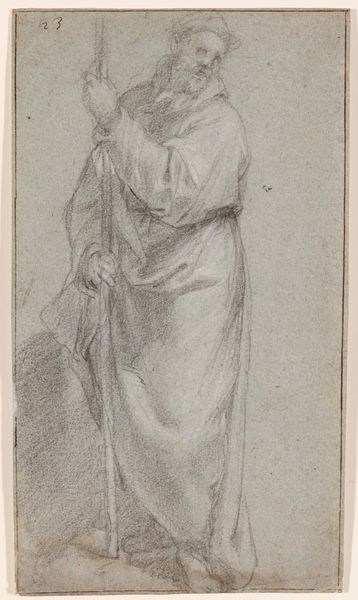
drawing, pencil
#
drawing
#
form
#
pencil drawing
#
romanticism
#
pencil
#
academic-art
#
realism
Dimensions: sheet: 16 1/8 x 10 9/16 in. (41 x 26.9 cm)
Copyright: Public Domain
Editor: Here we have Alfred Rethel's "Drapery Study," a pencil drawing that the Met dates somewhere between 1816 and 1859. The way the fabric is rendered, the weight and shadows…it's incredibly tactile. What strikes you most about it? Curator: Immediately, I’m drawn to think about representation and its ties to power. Whose stories are typically draped in these elaborate folds, immortalized through art? And, conversely, whose bodies are exposed, rendered vulnerable, and absent of such protective coverings, both literally and metaphorically, in artistic and historical narratives? Editor: That's a really interesting point. I hadn't considered the inherent power dynamics in representing even inanimate objects like fabric. Curator: Right? Academic studies like this weren't just technical exercises; they reinforced a visual language, a way of seeing and valuing certain subjects and forms. Who do you think this artist imagined being wrapped up with? Editor: Hmm… Given the era, probably nobility, or figures from religious stories, I suppose. Do you think this exercise was complicit? Curator: Absolutely. By honing his skill in depicting luxury fabrics, he was preparing himself to serve the elite, visually perpetuating their dominance and masking structural violence. The "realism" of academic art often camouflaged deeper truths, you see? Editor: Wow, that's… sobering. I initially saw it as just a beautiful study, but now I see so much more. It's like the fabric itself is hiding a story. Curator: Precisely. And it's our responsibility to unravel those stories, to look beyond the surface and examine the underlying ideologies at play.
Comments
No comments
Be the first to comment and join the conversation on the ultimate creative platform.
